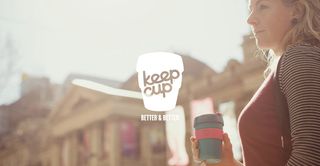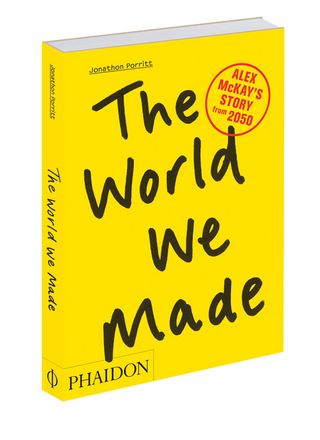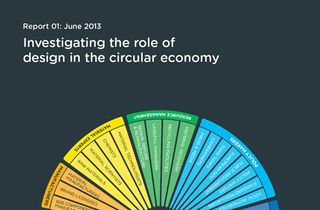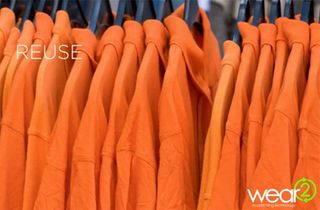5 ways designers improve sustainability with storytelling
The connection between people and products has almost vanished, however designers can bring this sentimentality back - Angela DeVorchik explains how.
Often the first connection between a product and a customer is in a store or even when a courier drops of a package full of new products at a home or office.
This saves customers' time and money, fitting into modern life seamlessly and offering unprecedented levels of convenience. Panic-ordered birthday presents arrive effortlessly in time, press a button and the latest phone is in your hand - but we're encountering a problem; the lifecycle of products has become shorter than ever before.
Devastating impact
We strive to buy the next best thing, seeing products as a status symbol and this is having a devastating impact on our planet as we waste water, energy and land to produce everything at a fast pace.
The connection between people and products has almost vanished, however designers can bring this sentimentality back through sustainable design. Every product has a story to tell and here's proof:
01. The Shoes
Giving a product a life and a story can add sentimentality and can reinforce the connection between consumers and products.
Fashion is renowned for being one of the most fast paced industries in the world, yet shoe tailor John Fluevog was determined to demonstrate the time, skill and expertise it takes to create and design a product.
In 2011 Fluevog's company began adding QR codes to handmade clogs, which showed every customer their exact pair of shoes in creation from raw materials to finished product.
Get the Creative Bloq Newsletter
Daily design news, reviews, how-tos and more, as picked by the editors.
The video showed the tremendous effort and skills it took to create the shoes and gave customers an added appreciation for the product - creating shoes that were always in season.
02. The Coffee Cup

A morning coffee has become the staple of modern day life, yet cups have created a huge amount of waste, with approximately one million disposable cups end up in landfill every minute. The solution: Keep Cup.
Sustainable solutions were available for coffee cups, but importantly the sentimentality between customers and the cups hadn't been established, as CEO Abigail Forsyth noted: "We looked to purchase and sell reusable cups as an alternative to disposable, but observed they hadn’t won the hearts of consumers."
As design was key to ensuring the cup was a success, KeepCup enabled customers to design their own cup.
Offering a blank canvas (or cup) offers customers something personal that they have created and the company introduce new colours every season that keeps the design fun, fresh and (most importantly) makes it more likely customers will want to showcase their creation every morning at the coffee shop.
03. The Book

With the development of digital books the traditional printed book may seem like an unsustainable alternative, yet printed books carry huge sentiment.
This was a problem faced by the UK's leading environmentalist and founder of Forum for the Future, Jonathon Porritt when he released his new book The World We Made: Alex McKay's Story From 2050.
The World We Made is told through the words of Alex McKay, a fifty year old teacher looking back from 2050. Alex’s story has one simple aim: to tell how it was that we got our world back from the brink of collapse and learnt to grow our societies and economies sustainably.
To showcase how design can be sustainable in 2013 Porritt sourced a selection of four 100 per cent recycled papers from environmental paper manufacturer Arjowiggins Graphic and had the book printed by the world's first carbon-neutral printer, Pureprint. This allowed Porritt to gain the sentimentality of each book whilst gaining a carbon footprint of just 1.88kg CO2 compared to the average of 4kg per book - in Porritt's words "they are both beautiful and durable."
04. The Website

Sophie Thomas and Nat Hunter wanted to change the way we all view products, recognising the critical role design can play in recovering the connection between consumer and product they launched The Great Recovery website, which works to build partnership to spot gaps for innovation and re-design.
The Great Recovery looks at the role of design in moving us from a linear to a circular economy. We need to disrupt our existing business models of ‘make, take, dispose’ - for example moving towards leasing instead of owning products so that we can keep value for the business without designing for planned obsolescence.
The Great Recovery hosts regular workshops where groups can visit the source of products to raise awareness of the provenance of materials such as plastic and paper. The workshops showcase the craft of designers and recognise the cycle of products from raw materials to finished products. Workshop attendees then redesign products so that materials are kept in flow and not thrown away.
05. The Clothes

Designing clothes is often based on style, shape and colour but innovative manufacturer wear2 have designed the ultimate material that can be disassembled at scale, meaning clothes can be recycled and reused with ease.
This new design will enable fashion-followers and brands to reconstruct clothes to suit new styles - helping to save the 16 million items of branded clothing that are disposed of every year in the UK.
The clever design has enabled customers to see opportunity and creativity in clothes that would usually be change with the seasons.
Words: Angela DeVorchik
Like this? Read these!
- Stunning iOS icons
- The best collage maker tools - and most are free!
- Photoshop tips, tricks and fixes to try today
Have you seen any great examples of sustainable design? Let us know in the comments box below!

Thank you for reading 5 articles this month* Join now for unlimited access
Enjoy your first month for just £1 / $1 / €1
*Read 5 free articles per month without a subscription

Join now for unlimited access
Try first month for just £1 / $1 / €1
The Creative Bloq team is made up of a group of design fans, and has changed and evolved since Creative Bloq began back in 2012. The current website team consists of eight full-time members of staff: Editor Georgia Coggan, Deputy Editor Rosie Hilder, Ecommerce Editor Beren Neale, Senior News Editor Daniel Piper, Editor, Digital Art and 3D Ian Dean, Tech Reviews Editor Erlingur Einarsson, Ecommerce Writer Beth Nicholls and Staff Writer Natalie Fear, as well as a roster of freelancers from around the world. The ImagineFX magazine team also pitch in, ensuring that content from leading digital art publication ImagineFX is represented on Creative Bloq.
